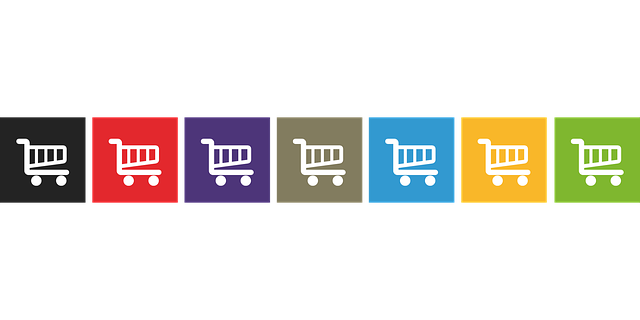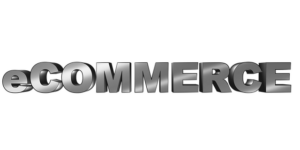In a competitive e-commerce landscape, ecommerce store design is crucial for attracting customers and boosting online presence via SEO. A successful strategy focuses on user experience (UX) by offering intuitive navigation, fast loading times, mobile responsiveness, and visually appealing product presentations. Key elements include strategic keyword usage, high-quality visuals, compelling descriptions, and a seamless checkout process to improve rankings, reduce bounce rates, and increase conversions. Integrating Technical SEO aspects like optimized page load times, structured data markup, and XML sitemaps enhances search visibility. Mobile optimization is vital for the growing mobile user base. Regular analysis using tools like Google Analytics and Search Console helps measure success and drive continuous improvement in ecommerce store design's SEO performance.
E-commerce stores have transformed the way businesses operate, but standing out in a crowded digital marketplace is a challenge. Effective e-commerce SEO and design strategies are key to driving traffic and conversions. This article explores how optimizing your e-commerce store design can significantly impact your online visibility and search rankings. From understanding core SEO principles to enhancing user experience and creating compelling content, we’ll delve into essential elements for a successful e-commerce store design.
Understanding E-commerce SEO and Its Impact on Store Design

In the dynamic realm of e-commerce, Search Engine Optimization (SEO) plays a pivotal role in enhancing online visibility and driving organic traffic to websites. E-commerce SEO is not merely about optimizing product listings; it involves a comprehensive strategy that intertwines with every aspect of an online store’s design. The layout, navigation, and overall user experience are crucial elements that search engines consider when ranking e-commerce sites. By understanding these nuances, businesses can create an ecommerce store design that not only captivates customers but also resonates with search engine algorithms.
A well-optimized ecommerce store design starts with intuitive navigation, ensuring visitors can effortlessly browse products and find what they’re looking for. Incorporating relevant keywords in page titles, meta descriptions, and product attributes improves search engine visibility, making it easier for potential buyers to discover the store. Visual appeal, including high-quality images and user-friendly interfaces, not only enhances the shopping experience but also signals to search engines that the site is trustworthy and valuable, thereby influencing its ranking positively.
Key Elements of an Optimized E-commerce Store Design

An optimized ecommerce store design goes beyond aesthetics; it’s a strategic blend of user experience, search engine visibility, and conversion-driven elements. Key components include responsive web design, ensuring your store seamlessly adapts to various devices. Fast loading times are crucial for retaining visitors and improving SEO rankings. A clear and intuitive navigation structure allows users to browse products effortlessly, reducing bounce rates.
Integrating high-quality visuals and compelling product descriptions enhances user engagement. Utilizing relevant keywords throughout the site’s content, from page titles to meta descriptions, improves search engine indexing. Moreover, a seamless checkout process encourages conversions by minimizing friction and providing a secure transaction environment. These elements collectively contribute to a successful ecommerce store design that attracts, converts, and retains online shoppers.
The Role of User Experience in E-commerce SEO Strategy

A well-designed ecommerce store isn’t just about aesthetics; it’s a crucial component of your SEO strategy. User Experience (UX) plays a pivotal role in how search engines, like Google, perceive and rank your site. A seamless UX encourages visitors to browse, interact, and ultimately make purchases, signaling to search algorithms that your site is valuable and relevant. Key elements include intuitive navigation, fast loading times, mobile responsiveness, and clear product presentation.
By focusing on these UX factors, you enhance the likelihood of higher search engine rankings, increased time spent on-site, reduced bounce rates, and improved conversion rates. This positive feedback loop not only benefits your ecommerce store’s visibility in search results but also fosters a loyal customer base.
Enhancing Visual Appeal: Images, Layout, and Color Schemes

E-commerce stores are not just about products; they’re also about experiences, and that starts with visual appeal. Enhancing the visual aspects of your online store can significantly impact how customers perceive your brand and their overall shopping experience. High-quality images play a pivotal role in drawing consumers in, showcasing products from various angles, and providing detailed views that build trust.
Layout and color schemes are equally important. A clean, intuitive design with well-spaced elements and easy navigation encourages users to explore further. Color choices should align with your brand identity while also considering psychological factors that influence purchasing decisions. For instance, warm colors can evoke feelings of energy and excitement, drawing attention to sale items or new arrivals, while cooler tones may convey trust and reliability, perfect for showcasing established products or luxury brands.
Content Creation for E-commerce SEO: Product Descriptions and Blog Posts

Creating compelling content is a cornerstone of successful E-commerce SEO. Product descriptions go beyond merely listing features; they should paint a vivid picture for customers, highlighting benefits and addressing pain points. Well-written product descriptions not only improve user experience but also encourage conversions by fostering trust and understanding. Integrating relevant keywords naturally within these descriptions can significantly boost search engine rankings for specific products.
Beyond individual product pages, blog posts offer a platform to create valuable content that drives organic traffic to an ecommerce store design. By sharing industry insights, product reviews, how-to guides, and trends, blogs attract potential customers and establish the brand as an authority in its niche. Optimizing these posts with targeted keywords further enhances their SEO potential, connecting interested shoppers directly with the products they’re looking for.
Technical SEO Considerations for E-commerce Websites

Creating an optimal ecommerce store design involves careful consideration of various Technical SEO aspects to enhance search visibility and user experience. One crucial element is ensuring fast page load times, as even a slight delay can negatively impact conversion rates. Optimizing image sizes, leveraging browser caching, and utilizing content delivery networks (CDNs) are effective strategies to streamline loading speeds.
Additionally, implementing structured data markup, including schema.org annotations, helps search engines comprehend product information better. This enhances rich snippet displays in search results, attracting more clicks. Correctly setting up XML sitemaps ensures that search engine crawlers can efficiently access and index all pages of your ecommerce store design, leading to improved overall discoverability.
Optimizing Mobile Experience for Better E-commerce SEO

In today’s digital age, where mobile usage dominates online behavior, optimizing the mobile experience is paramount for any successful e-commerce store design. With a vast majority of shoppers accessing stores via smartphones and tablets, ensuring your site offers a seamless, user-friendly experience on all devices is crucial for boosting SEO rankings and driving conversions. This involves creating responsive layouts that adapt gracefully to different screen sizes, streamlining navigation for easy browsing, and optimizing page load speeds to minimize bounce rates.
A mobile-centric approach not only enhances the overall user journey but also signals to search engines like Google that your e-commerce store is dedicated to providing an exceptional experience across all platforms. This can lead to improved visibility in mobile search results, driving more organic traffic and increasing the likelihood of potential customers turning into loyal buyers.
Measuring and Analyzing E-commerce SEO Success

Measuring and analyzing the success of your e-commerce SEO efforts is crucial for understanding what’s working and where improvements can be made. Key performance indicators (KPIs) such as organic traffic, click-through rates (CTRs), conversion rates, and average order value provide valuable insights into the effectiveness of your optimization strategies. By tracking these metrics over time, you can identify trends and pinpoint areas that require adjustments in your e-commerce store design and SEO tactics.
Utilizing tools like Google Analytics and Search Console allows for detailed analysis of user behavior on your site. These platforms offer insights into which keywords drive traffic, how visitors navigate through your product pages, and the bounce rates associated with different sections of your e-commerce store design. This data-driven approach enables you to make informed decisions about content optimization, mobile responsiveness, and overall user experience, ultimately enhancing your SEO success.
